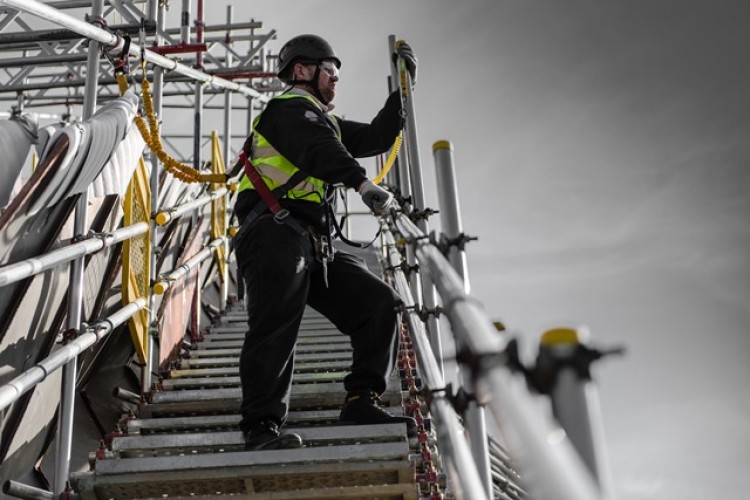Top Scaffolding Trends for 2024 Innovations and Industry Insights

As the construction industry continues to evolve, so too does the field of scaffolding. In 2024, several key trends and innovations are shaping the way scaffolding is designed, used, and managed. These trends reflect advancements in technology 租鋁架工作台, changes in regulations, and shifts in industry practices aimed at improving safety, efficiency, and sustainability. This article explores the top scaffolding trends for 2024, highlighting the innovations and insights that are driving the industry forward.
1. Advanced Scaffold Materials
One of the most notable trends in scaffolding for 2024 is the adoption of advanced materials. Traditional scaffolding materials such as steel and aluminum are being supplemented with newer, more lightweight, and durable options. Composite materials, which combine the strength of metals with the lightweight properties of polymers, are gaining popularity. These materials offer increased resistance to corrosion and environmental wear, enhancing the longevity and safety of scaffolding systems. The use of advanced materials not only improves performance but also reduces the overall weight of the scaffolding, making it easier to transport and assemble.
2. Smart Scaffolding Technologies
The integration of smart technologies into scaffolding systems is transforming how scaffolding is managed and monitored. In 2024, we see a rise in the use of IoT (Internet of Things) sensors and data analytics to enhance scaffolding safety and efficiency. Smart scaffolding technologies can monitor load distribution, detect structural weaknesses, and provide real-time data on the scaffold’s condition. This technology allows for proactive maintenance and immediate response to potential issues, significantly improving safety and reducing downtime. Additionally, smart scaffolding can streamline the logistics of scaffold assembly and dismantling by providing detailed information on component usage and wear.
3. Enhanced Safety Features
Safety remains a top priority in the scaffolding industry, and 2024 introduces several new features designed to protect workers and ensure compliance with regulations. Enhanced safety features include advanced guardrails, non-slip surfaces, and integrated fall protection systems. Innovations such as automatic safety locks and real-time monitoring systems are being implemented to prevent accidents and ensure that scaffolding meets the highest safety standards. These features help create a safer working environment, reduce the risk of falls, and enhance overall project safety.
4. Modular and Prefabricated Scaffolding
Modular and prefabricated scaffolding systems are becoming increasingly popular due to their efficiency and versatility. These systems are designed to be easily assembled and disassembled, allowing for quicker setup and teardown. Prefabricated components can be manufactured off-site and then assembled on-site, reducing construction time and labor costs. Modular scaffolding also offers greater flexibility, as components can be easily reconfigured to suit different project requirements. This trend towards modularity is driven by the need for faster project completion and greater adaptability in the face of evolving project demands.
5. Green and Sustainable Scaffolding Solutions
Sustainability is a growing concern in all sectors, including construction and scaffolding. In 2024, there is a notable shift towards green and sustainable scaffolding solutions. This includes the use of eco-friendly materials, such as recycled metals and sustainable composites, as well as practices that minimize waste and reduce environmental impact. Companies are also exploring ways to improve the energy efficiency of scaffolding operations and reduce the carbon footprint of scaffolding systems. These sustainable practices not only contribute to environmental conservation but also align with the increasing regulatory and consumer demand for greener construction practices.
6. Improved Training and Certification Programs
As scaffolding systems become more advanced, the need for improved training and certification programs is essential. In 2024, there is a growing emphasis on comprehensive training programs that cover the latest scaffolding technologies, safety procedures, and best practices. Certification programs are being updated to reflect new industry standards and regulations, ensuring that scaffolders are well-equipped to handle modern scaffolding systems. Enhanced training and certification help ensure that workers are knowledgeable about the latest trends and technologies, promoting safer and more efficient scaffold use.
7. Integration with Digital Tools
The integration of digital tools into scaffolding management is another significant trend for 2024. Digital platforms and software are increasingly used for planning, designing, and managing scaffolding systems. Building Information Modeling (BIM) and other digital design tools enable more precise planning and visualization of scaffolding structures. Additionally, project management software helps streamline scaffold inventory management, track progress, and coordinate logistics. The use of digital tools enhances efficiency, reduces errors, and facilitates better communication among project teams.
In conclusion, the scaffolding industry is experiencing several exciting trends and innovations in 2024. Advanced materials, smart technologies, enhanced safety features, modular systems, sustainable practices, improved training, and digital tools are all contributing to a more efficient, safe, and sustainable approach to scaffolding. As these trends continue to evolve, they will shape the future of scaffolding and contribute to more successful and secure construction projects.